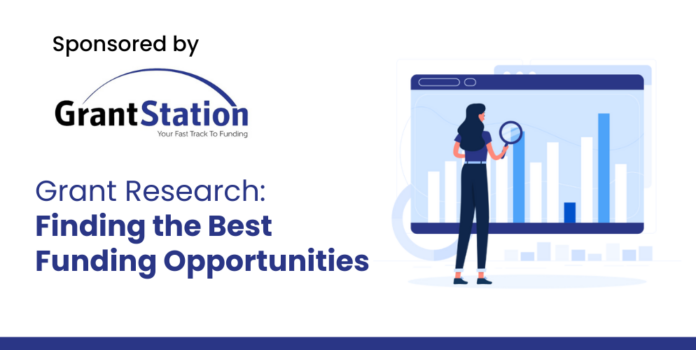Steve Jobs is quoted as saying, “The key is in not spending time, but in investing it.” There are a lot of practical ways to carry out this principle. Investing your time in finding the right funding sources will reap benefits in the future.
Each nonprofit organization is different. You are unique and need to create a process that works best for you. However, you don’t have to recreate the wheel or start from scratch. Follow these steps to create your own systematic approach to grants research.
Step 1: Capture the Key Elements of Your Project
Start by creating a document that begins to capture the essence of your project. This isn’t the time for beautifully written prose. It is a way to identify some of the core elements of your project. For example:
- What is your geographic scope or what is your service area?
- What needs are you addressing in the community? How is your target population struggling?
- Who is your target population?
- What are the basic components of the services your project will deliver?
- What resources do you need to fully implement your project?
Identifying these key elements of your project will help you be creative and expansive in selecting search terms. Looking at your project from a variety of lenses will help you explore a greater number of funding opportunities.
Step 2: Identify Search Terms
Use the document you created to guide your grants research. You will find keywords that are repeated. Or keywords that stand out. What is important here is to identify the terms and also translate them into terms the funders use. GrantStation has a free resource to help you select your search terms.
Step 3: Research Funding Sources
There are a lot of different types of grantmakers. You can start by reviewing:
- the federal government;
- state governments;
- local governments;
- private foundations;
- corporate foundations;
- religious grantmakers;
- associations and clubs; and,
- vendors.
This step is often greatly enhanced by purchasing a membership to a reputable company that researches and catalogs funding opportunities. This saves you time in finding funding sources to meet your needs.
Step 4: Create Decision-Making Criteria
Now that you have a list of potential funders, establish criteria to evaluate the list. This will help you find the best fit for your organization. This is where your unique attributes come into play. You will “weigh” the different criteria based on your situation.
The first two questions will serve as a first “cut.” If these answers are “no,” the funding opportunity would not be a good fit for your project:
- Do we meet their eligibility requirements?
- Is this funding consistent with our mission?
Other considerations you could evaluate include:
- Are we in the funder’s geographic giving area?
- Do we address the funder’s areas of interest?
- Do we serve their target population?
- Does the funder provide the type of support we need?
Here are some questions that may apply to your organization’s creditability and readiness:
- What is our credibility with this funder?
- Do we have the subject matter expertise for the project?
- Do we have fiscal expertise to manage this award?
- Are the project plan and budget already developed?
- Do we have support from the board and staff?
And then you might want to evaluate the effort and timing, to ensure a good fit for your resources:
- How complex are their application guidelines?
- Is there adequate time to write this proposal?
- Does the funder require a copy of our latest financial audit?
- Does the funder require a match?
- Does the award date fit the project timeline?
- How complex are their project evaluation requirements?
As you customize your decision-making matrix, add additional questions that make sense to your organization and project. For example, you might want to include a question about the competitiveness of the application process or the level of collaboration that may be required by the funder.
Then determine the “weight” of the criteria by creating a numbering system. For example, you might evaluate all of the criteria on a scale of 1-5. Or you could weigh some criteria higher or lower. Finally, establish ranges to determine if the funding opportunity 1) should move forward on your strategy list; 2) needs further research or follow-up with the funder; or 3) should not move forward.
Step 5: Build Your Strategy
Now that you have funding opportunities that you want to move forward, build your strategy. This would include calendars and timelines. It is recommended to build this with a 12-18 month time frame so you are keeping your grants pipeline full. It also helps you plan around times you will be busier writing your proposals and slower times for research and planning.
Wrapping It Up
Finding funding opportunities is not a one-size-fits-all process. You need to develop a custom system that works for your organization. Following these five steps, you can create the process that works the best for you. The decision-making matrix can be built into an Excel spreadsheet for easy calculations. You want to filter all your decisions through this matrix for consistency. The questions, weights of different criteria, and ranges for your proverbial “green light” can all be created with your organization in mind. Happy grant seeking!
GrantStation GrantStation.com, Inc. offers nonprofit organizations, educational institutions, and government agencies the opportunity to identify potential funding sources for their programs or projects as well as resources to mentor these organizations through the grantseeking process. – Take a look at GrantStation’s FREE demo at NonprofitLibrary.com HERE!

